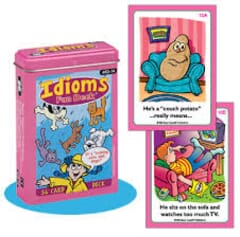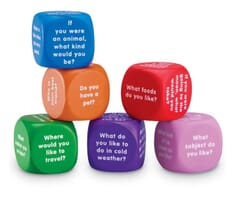Get exclusive deals you won't find anywhere else straight to your inbox.

Improving Social Skills In Children With Special Needs
Children with special needs often have great difficulty interpreting emotions and making sense of social cues.
Here are some ideas and activities that you can do with your child to help improve his or her social skills:
SOCIAL SKILL - EYE CONTACT
Eye contact is a form of body language and helps to build a connection with the person you are talking to. Strong eye contact demonstrates that you are actively listening in what they have to say builds trust and confidence in communication.
1. Have a staring contest
Encourage eye contact by seeing who can stare the longest – the loser may be the one who looks away first or the one who blinks first.
2. Make eye contact whilst swinging
Stand in front of your child whilst they swing gently and try to make eye contact with them. The swing motion means you will both need to concentrate to maintain eye contact. The sensory input from gentle swinging may be calming for your child and help them to focus more on you. An indoor swing such as a net swing is ideal for this exercise.
IDIOMS
An idiom is a phrase where the words taken together have a different meaning to the dictionary definition of the single words (eg “your pulling my leg”, “it’s raining cats and dogs”). Many AS children are very literal and often have great difficulty with idioms.
Activities that can help kids with idioms include:
3. Create a talking Book
Use a talking album to insert a picture to illustrate the idiom (you can draw it or download pictures from the web) and record a message about each picture – even better get your child kid to draw the picture and explain the meaning of Idioms they’ve heard.
This 56 card set matches idioms with their real meaning. Game ideas are included.
SOCIAL SKILL - READING FACES & EMOTIONS
Reading body language and emotions is an important part of everyday life that many with Autism and Aspergers find difficult. This skill is important at home and school and confusions arise from kids misinterpreting the emotions of others.
5. Emotion Charades
Rather than use film or TV titles play charades using emotions. Take turns to act out emotions and the others have to guess how you are feeling (write down or draw the emotion to be acted out on slips of paper beforehand). Another great game is to draw the emotion rather than act it out (like the game Pictionary). Make it more difficult by setting a rule that you cannot draw the emotion using a face. Instead, they have to express the feeling by drawing the body language or aspects of a situation that would lead to that emotion (e.g. for sadness, you can draw a kid sitting on their own)
6. Face games
Play “face mirroring” games – pull a face (eg. stick out your tongue or touch your nose) and your child has to copy you. This is a great fun way to work on social interaction. You can also pull facial expressions (like smiling for happiness) and asking the child to copy you and explain your feelings. Also great for practising eye contact.
7. Emotions Games & Resources
There are a number of great Emotions games and resources. Try Emotions Cubes to match photographs to emotions or Photo Feelings Fun Deck - 56 card set with games ideas and activities. Understanding Feelings Pack is a great resource for teaching emotions on faces.
STAYING ON TOPIC
Conversations tend to follow one particular topic with each person contributing to the conversation on that particular topic until the conversation ends or the topic changes. Some children find it difficult to stay “on topic” and may start talking about something total unrelated – which can make it difficult for them take part socially and make friends. The ability to remain on the topic of conversation is an important social skill. Here are some activities to help with staying on topic and carrying out a conversation.
8. Topic Game
Play an Alphabet game where every letter has to be the beginning of a word in a theme or topic. For example Animals – A is for Antelope, B is for Badger, C is for Car etc
9. Improvisational Storytelling
Encourage speech and imagination by asking children to make up a story and take it in turns to build on the story. Some children will need some ideas and encouragement and Let's Talk Cubes are ideal. Each set contains six dice which are 4cm cubed with different situation prompts on each side. Roll the cubes to get the story started and tell stories to match to the situations.
Adapted from an article on http://www.friendshipcircle.org/




